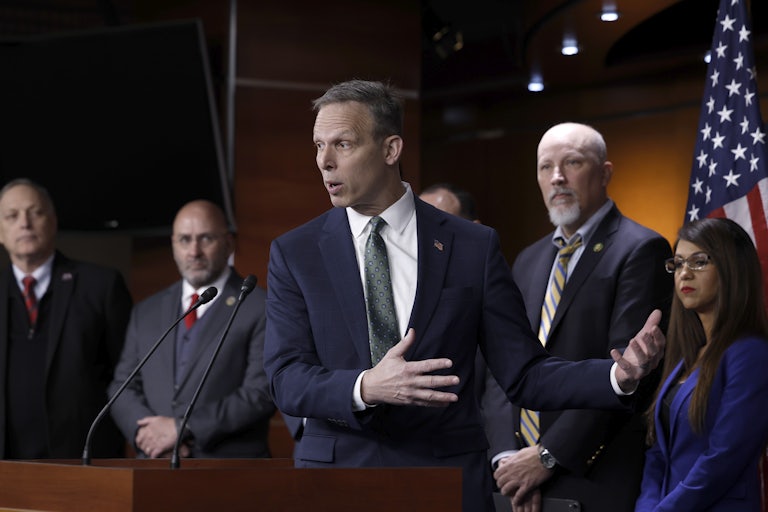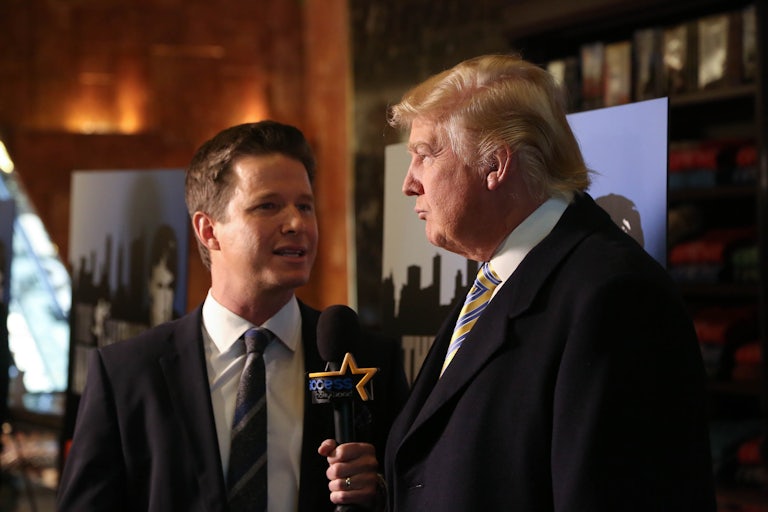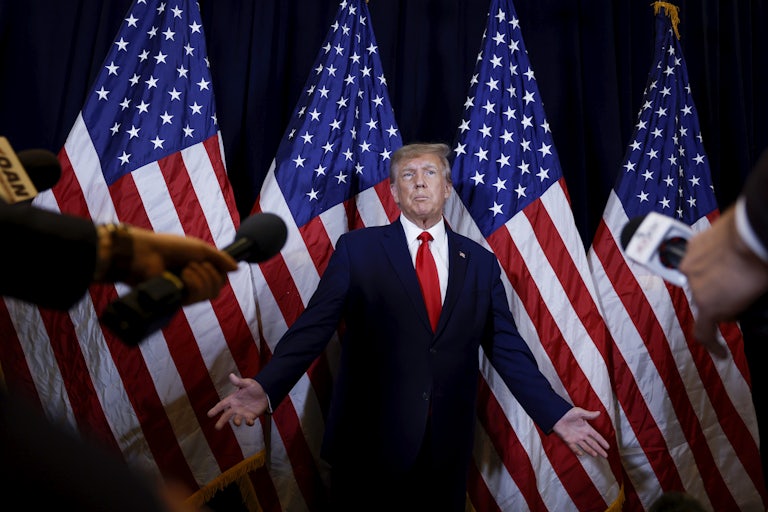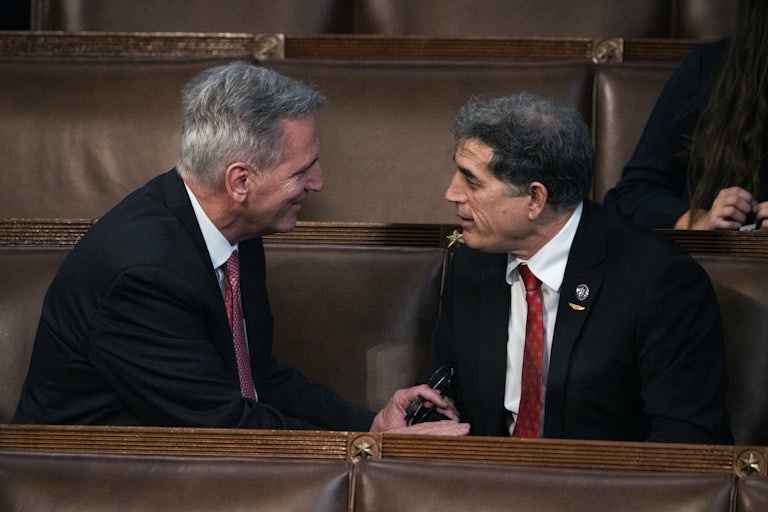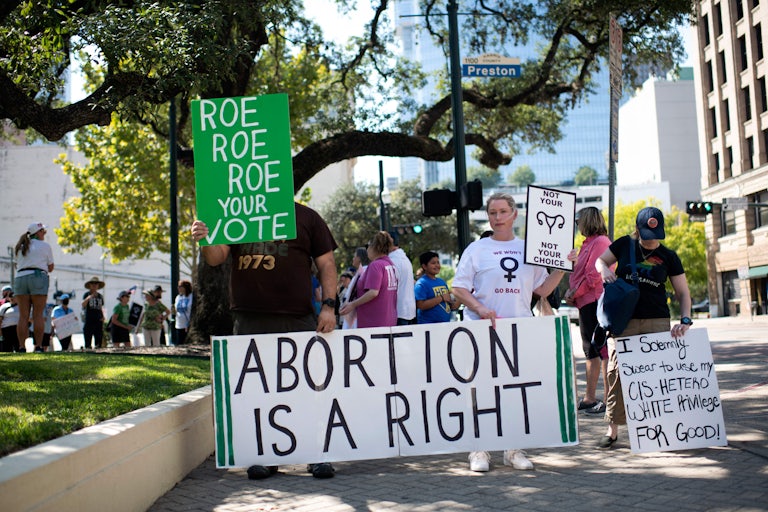Trump’s Rollback of Dodd-Frank Regulations Directly Led to the Silicon Valley Bank Failure
This is what happens when you deregulate checks on financial institutions.
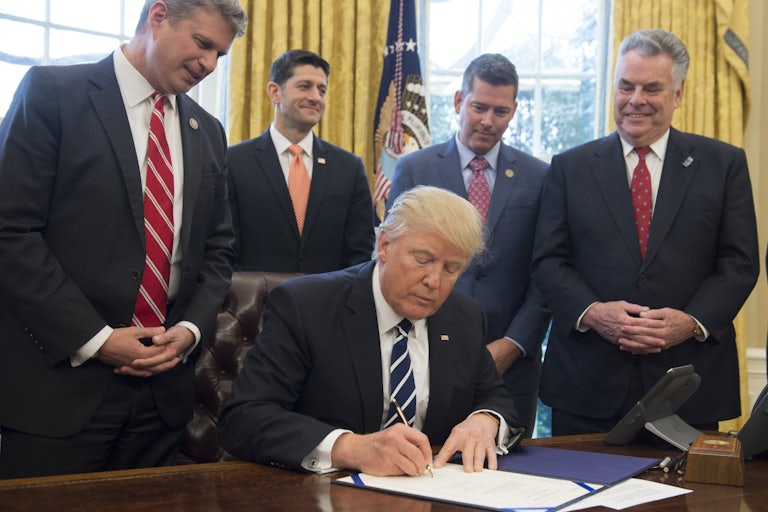
Make no mistake: Just like train derailments, climate disaster, and most crises in society, barefaced deregulation was the antecedent to the collapse of Silicon Valley Bank.
On Friday, the major lender for tech startups was shut down by regulators. The commercial bank, among the 20 largest in the country, was caught in a free-fall bank run. Some of it seemed set off after a letter from SVB’s CEO Greg Becker, describing to shareholders a $1.8 billion loss on the sale of U.S. treasuries and mortgage-backed securities; high interest rates backgrounded the letter. Peter Thiel, a massive backer of the likes of J.D. Vance and Blake Masters, had his venture capital firms direct all their portfolio companies to withdraw their funds from the bank.
And then the floodgates burst open.
When all was said and done, $42 billion was withdrawn from SVB on Thursday. California’s Department of Financial Protection and Innovation seized the bank the following day, finding it insolvent and “incapable of paying its obligations as they come due.”
While Biden now attempts to relieve strain on depositors, while not placing burden on the rest of the public (i.e., not gratuitously bailing out the rich at the expense of everyone else), it’s important to understand how we got to this crisis in the first place.
In May 2018, Donald Trump signed into law a bill rolling back Obama-era Dodd-Frank regulations enacted to take on “too big to fail” financial institutions in the aftermath of the Great Recession. The bill was pushed through the Republican-controlled Congress—with the help of 17 Democrats in the Senate and 33 Democrats in the House.
The rollback raised the asset threshold for banks subject to enhanced scrutiny, like stronger regulations and stress tests, from $50 billion to $250 billion. As The Lever reported, SVB CEO Greg Becker had been lobbying for this change for years. SVB had just passed $50 billion in assets at the time Trump changed the regulations.
By December 2022, SVB had $209 billion in assets—below the $250 threshold but evidently enough to have certainly necessitated some form of oversight and testing to see if it could survive the type of run that just occurred.
What’s telling is how weak the conservative response has been. Venture capitalist libertarian tycoons clumsily beg for bailout funds despite their supposed disdain for government expenditure. Ron DeSantis, who voted to roll back Dodd-Frank in 2018, is now among the Republican chorus blaming the bank collapse on diversity and wokeness. In each increasingly frequent social crisis, the culprit is almost always deregulatory conservatism; not only are more and more people coming to understand Republican politics as socially untenable—it is being revealed as practically unjustifiable too.


